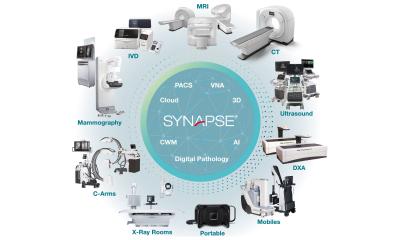Integrated healthcare IT systems support holistic approach to patient records access
By Cynthia E. Keen
The implementation of an integrated HIS/RIS into a single IT platform facilitates data sharing among the more than 1,300 physicians and support staff who work at East Tallinn Central Hospital (ETCH) in Estonia. ETCH, a municipally owned healthcare delivery network, was formed in 2001 with the merger of four hospitals.

The main large complex incorporates six clinics and five remote buildings, which support 453,000 outpatient visits and almost 29,000 inpatient visits each year.
Dr Peeter Ross, Director of Research and Development, described the transformation of ETCH at the Hospital Management Symposium. His significant prior experience with data networks included EU funded projects with Baltic eHealth, InterregPacs, and R-Bay.
Before the integrated HIS/RIS/PACS was operational in 2003 at East Tallinn Central Hospital, 92,000 radiology procedures were performed annually. These represented X-ray, ultrasound and nuclear medicine, diagnostic modalities that did not generate many images. Just three years later, the number of procedures has almost doubled. More than 171,000 examinations were perfomed in 2007. The radiology department has significantly expanded the imaging services it offers to also include CT, MRI, SPECT-CT, PET/CT and bone densitometry (DEXA). All but DEXA generate large image datasets numbering hundreds to thousands of images.
To manage access to all the patient data in a hospital with a steadily growing number of patients, ETCH has adopted filmless and nearly paperless information management. Efficient electronic reporting service is provided to remote facilities. General practitioners have web-based access to all of their patients’ records, and patients themselves can review their own healthcare records using their personal electronic ID card. Not only does this represent a complete reengineering of workflow management from a linear model to a dynamic one, but its efficiencies also allow for treatment to be initiated more rapidly than if the different IT components had to be accessed separately.
The adoption of a common strategy for patient data management in the region is designed for growth as well as easy access should records be needed by specialists located outside the region. The PACS is connected to a nationwide Estonian PACS (Agfa Healthcare) and the entire HIS/RIS/PACS is connected to the Baltic eHealth Network.
X-road, a platform-independent secure standard interface between databases and information systems, securely connect databases and information systems of the public sector.
Each time a patient record is accessed, the medical professional is required to complete a short form explaining the reason. These data access files are carefully monitored to provide quality control for patient confidentiality. Because of the tight and trusted security, the holistic approach to data access is endorsed and supported by the population.
11.03.2008











